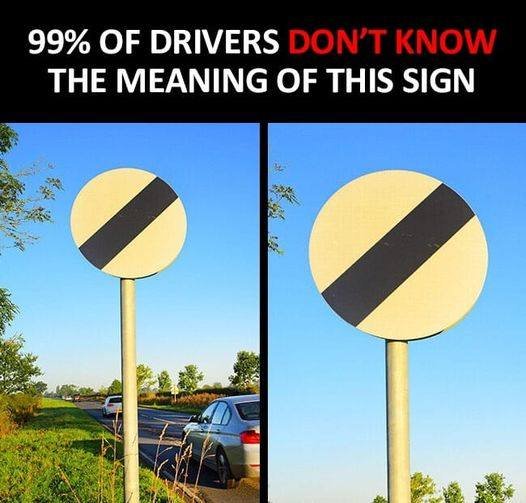“The Hidden Meaning Behind the Black-and-White Road Sign”
You’ve probably seen it while driving — that plain white circle with a single black diagonal stripe cutting across it. It appears quietly, without numbers or warnings, almost as if asking you to know what it means rather than telling you.
It’s the national speed limit sign — one of the most misunderstood symbols on UK roads.
At first glance, it seems simple. Yet it carries a silent expectation: you must already know the limits. Unlike other signs that spell things out, this one trusts the driver’s awareness. It’s a test not only of knowledge, but of responsibility.
In practical terms, it means the default national limits now apply:
-
60 mph on single carriageways.
-
70 mph on dual carriageways or motorways.
But that’s only for cars. Vans, lorries, and trailers must obey lower limits. And if other signs or markings set a different rule, those override it.
Still, there’s a deeper wisdom behind the simplicity of this sign. It doesn’t shout; it assumes maturity. It reminds drivers that freedom on the road is never absolute — it’s framed by awareness, judgment, and moral restraint. You’re allowed to go fast, but only if it’s safe.
Because the real limit isn’t just what the law permits — it’s what wisdom allows. Rain, fog, a curve in the road, a tired mind — each demands that we slow down, no matter what the sign says.
Even local councils know this, which is why some roads carry lower limits, protecting lives where danger hides in plain sight.
So next time you see that quiet black-and-white symbol, read it differently. It’s not just a speed rule; it’s a mirror for life itself:
Freedom always comes with trust.
And trust is proven not when someone’s watching — but when you choose restraint on your own.


